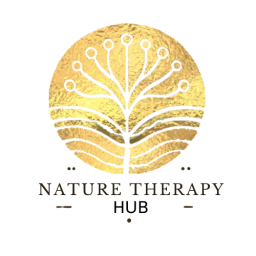



9
MARCH
2025
The Science Behind Sound Baths: How Multidirectional Sound "Cheats" the Brain and Activates Healing
Sound baths are more than just a relaxing experience — they engage the body and mind on a deep, neurological level. If you've ever attended a sound bath and felt tingling sensations, emotional release, or even a sense of weightlessness, it's not just your imagination. There's a fascinating reason behind these responses, rooted in the way sound frequencies interact with the brain and nervous system.
In this post, I want to share how sound baths work on the body, particularly the technique of using multidirectional sound with gongs to “cheat” the brain — a method that creates a deep state of relaxation and healing by influencing how the brain processes sound.
How Sound Affects the Body
When you experience a sound bath, the sound waves produced by instruments like gongs, monochords, and duduks travel through the body, not just through the ears but also through the skin, bones, and water within the body.
Sound operates at a vibrational level, which means that different frequencies directly affect the nervous system:
- Low frequencies (such as from gongs and drums) stimulate the parasympathetic nervous system, which is responsible for the “rest and digest” response. This lowers heart rate, relaxes muscles, and slows breathing.
- High-pitched sounds (such as from Koshi chimes and tingsha bells) activate the vagus nerve and support emotional release and mental clarity.
- Layered harmonic sounds (like those from the monochord and Duduk) create complex overtones that the brain struggles to interpret, shifting mental activity from the analytical left brain to the creative, intuitive right brain.
The key to achieving a deep state of relaxation and mental release lies in how the sound is delivered — and that’s where multidirectional sound comes in.
The Power of Multidirectional Sound: How It "Cheats" the Brain
One of the most powerful techniques used in sound baths, particularly with gongs, is the intentional creation of multidirectional sound.
During a sound bath, the brain naturally tries to locate the source of sound. It’s part of our survival mechanism — identifying where a sound is coming from helps us assess danger and respond appropriately.
However, when the sound comes from multiple directions at once, especially with varying frequencies, the brain becomes “confused.” The left brain, which processes logic, location, and order, struggles to process the conflicting information. This creates a mild state of cognitive dissonance, which the brain responds to by:
✅ Letting go of analytical thinking
✅ Switching dominance from the left brain (logic) to the right brain (creativity and intuition)
✅ Inducing a meditative state where emotional processing and deep healing can occur
For example, when playing the gong, I intentionally create overlapping sounds by striking different areas of the gong at varying intensities and rhythms. This creates a complex web of sound that the brain cannot easily decode, pushing the mind into a state of "letting go" and surrender.
The result? A shift from a busy, overactive mind to a calm, open state where deep emotional release and healing become possible.

Why You Might Experience Tingling or Emotional Release
It’s common for participants to feel physical sensations like tingling in the hands and feet, warmth, or even muscle twitches during a sound bath. Here’s why:
🔸 Increased circulation: The sound vibrations stimulate blood flow and lymphatic movement, which can cause tingling or warmth in the extremities.
🔸 Energetic release: Sound therapy helps the body process and release stored tension and emotional blocks. The tingling can be a sign that energy is moving and releasing.
🔸 Nervous system response: As the body enters a relaxed state, the parasympathetic nervous system becomes active, which can result in heightened sensitivity in the hands, feet, and skin.
It’s also not uncommon to experience emotional release during or after a sound bath — feeling teary, euphoric, or deeply calm. This is because sound reaches deep into the emotional centers of the brain, unlocking stored emotions and allowing them to surface in a safe, non-verbal way.
How to Respond to These Sensations
If you feel tingling or emotional release during a sound bath, know that it’s completely normal and a positive sign that your body is responding to the therapy. Here’s what you can do:
✨ Breathe deeply — focus on slow, steady breathing to stay grounded.
✨ Adjust your position if you feel uncomfortable — sometimes changing how you are lying down can shift the sensations.
✨ Let go — trust that your body is processing what it needs to release.

At the end of each sound bath, I guide participants through gentle grounding techniques like wiggling the fingers and toes and reconnecting with the breath. I also serve a warm verbena infusion with dates to help settle the body and bring participants back into a state of calm presence.
Why It Works
Sound baths work because they bypass the thinking mind and engage the body’s natural healing response. By shifting the brain from left-brain dominance (logic and analysis) to right-brain dominance (intuition and creativity), sound therapy creates a doorway for emotional processing and deep relaxation.
The multidirectional sound technique, combined with layered harmonic overtones, creates an immersive experience that allows the body and mind to reset, release, and realign.
Final Thoughts
If you’ve experienced tingling, emotional release, or a sense of deep calm after a sound bath — you’re not alone. It’s a sign that your body and mind are responding to the sound therapy on a deep, cellular level.
Next time you join a sound bath, allow yourself to fully surrender to the experience. Trust that the sound knows exactly where to go — and that your body knows exactly what it needs to heal.
That’s the power of sound.

We need your consent to load the translations
We use a third-party service to translate the website content that may collect data about your activity. Please review the details in the privacy policy and accept the service to view the translations.
